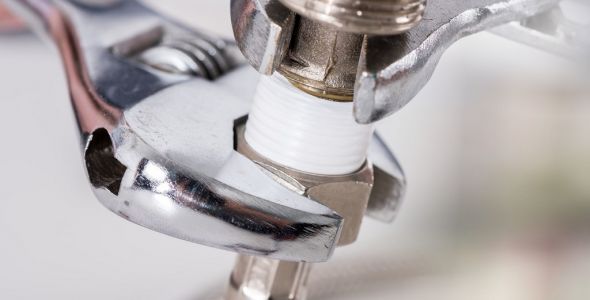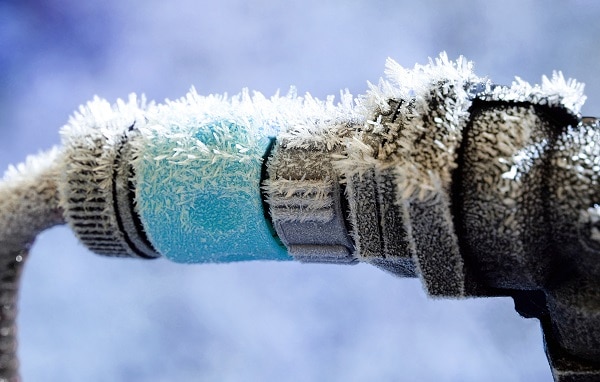We have discovered this article on Winterizing Your Pipes listed below on the web and felt it made perfect sense to write about it with you here.

All property owners that live in temperate climates must do their best to winterize their pipelines. Failing to do so can mean catastrophe like icy, cracked, or burst pipelines.
Activate the Faucets
When the temperature declines and it seems as if the cold temperature level will last, it will help to turn on your water both inside your home and outdoors. This will certainly maintain the water streaming with your plumbing systems. Furthermore, the activity will decrease the cold process. Notably, there's no requirement to turn it on full blast. You'll wind up squandering gallons of water in this manner. Rather, aim for about 5 declines per minute.
Open Cabinet Doors Hiding Plumbing
When it's chilly outside, it would be valuable to open cabinet doors that are concealing your pipelines. Doing this tiny technique can maintain your pipelines warm and restrict the potentially dangerous outcomes of freezing temperatures.
Take Time to Wrap Exposed Piping
One awesome and also simple hack to warm up cold pipelines is to wrap them with warm towels. You can cover them first with towels. After protecting them in place, you can put boiling water on the towels. Do it slowly to let the towels soak up the liquid. You can additionally utilize pre-soaked towels in hot water, simply don't forget to put on protective gloves to safeguard your hands from the warmth.
Attempt a Hair Clothes Dryer or Warmth Gun
When your pipes are practically freezing, your dependable hair clothes dryer or warmth weapon is a godsend. Bowling hot air directly into them might assist if the hot towels do not aid remove any type of resolving ice in your pipes. Do not make use of various other items that create direct fires like a strike torch. This can result in a larger catastrophe that you can not manage. You might end up harmful your pipes while attempting to melt the ice. As well as in the long run, you may even wind up melting your home. Beware!
When Pipes are Frozen, shut Off Water
If you observe that your pipes are entirely icy or virtually nearing that phase, transform off the primary water shutoff instantly. You will typically locate this in your basement or laundry room near the heating unit or the front wall surface closest to the street. Transform it off today to avoid more damages.
With more water, even more ice will stack up, which will ultimately lead to rupture pipelines. If you are unsure regarding the state of your pipes this winter months, it is best to call a specialist plumber for an evaluation.
All home owners that live in pleasant environments need to do their best to winterize their pipes. Failing to do so can spell calamity like icy, broken, or ruptured pipelines. If the warm towels do not aid dislodge any kind of working out ice in your pipes, bowling warm air straight right into them might help. Turn off the primary water shutoff promptly if you notice that your pipes are completely icy or practically nearing that stage. With even more water, even more ice will certainly pile up, which will eventually lead to burst pipes.
PREVENT YOUR PIPES FROM FREEZING THIS WINTER
A Leading Cause of Property Damage
When the weather is taking a deep nose dive into the cold dreary days, the risk of your pipes freezing and potentially bursting skyrockets. Unfortunately, during these cold dreary months, burst pipes are the most common denominator for property damage. The pipes that are most at the risk are those that are in areas where it is most cold in your home. For instance, pipes located in interior places such as basements, attics, and your garage. Unfortunately, that doesn’t mean that the pipes running through your cabinets or exterior walls can’t freeze. Good news, however, is that you can do things to help prevent pipes from freezing.
How to Prevent Pipes From Freezing
Once the temperature starts to drop during the winter, you should be taking the proper measures needed to ensure that your pipes stay warm and that there is circulation of water through them. Some steps that experts may recommend could go against your better judgement when it comes to saving water and heat. However, it would go without saying that when expenses are compared, damaged pipes could put a bigger dent in your wallet than a water bill.
What Can I Do?
Keep your garage door closed. This is very important, especially if you have water supply lines running through your garage. Open your kitchen and bathroom cabinets to allow warm air to circulate through them. Allow air circulation throughout your home. Keeping the interior doors open will once again allow the warm air to circulate inside your home. Ensure your thermostat is running the same temperature throughout the night and day. If you plan to be away from home during the cold months, set your temperature no lower than 55° F. This should provide enough heat to keep the pipes warm and prevent any remaining water inside the pipes from freezing. For more of a long-term solution, add insulation to attics, basement, and other crawl spaces around your home. By allowing your faucet to drip, it will alleviate pressure in the system. This is important because the pressure that is created between the blockage and the faucet can potentially cause the pipes to burst. Allowing the faucet to drip will prevent the pressure from building up, therefore keeping the pipes from bursting. Seal any cracks, openings, and crawl spaces around your home to prevent cold air from coming inside. This keeps your pipes-not to mention your home-warmer and less susceptible to issues caused by freezing temperatures. For the pipes in your home that are easily accessible, applying electrical tape to them might prevent them from freezing over. This is a quick fix, as you can apply the tape directly to the pipe. There are two options for heating tapes. One turns on and off by itself when it senses heat is needed. The other type of heating tape needs to be applied when heat is needed and removed when not necessary. If you have exposed pipes in your home, you can check this website to take a look at a few options that would be available at a shop near you.

Do you appreciate reading about How to stop pipes from freezing during the winter? Put feedback further down. We will be delighted to hear your thinking about this piece. In hopes that you visit us again in the near future. For those who enjoyed our blog posting plz don't forget to share it. Thanks a lot for your time. Visit again soon.
Instant Quote